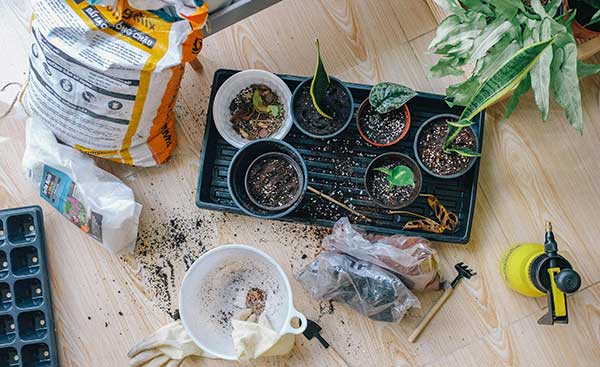School grounds are more than just plots of land; they are places that change lives. They are living places where students, teachers, and towns can work together to grow not only plants but also health, knowledge, and relationships. Putting plants in schools can help students in many ways, including their health, education, and happiness. Here are six important reasons why starting a school garden is a good idea. These green spaces can make the lives of kids and their communities better.

1. Enhances Hands-On Learning
School gardens are like live labs where ideas that seem abstract become real. When students can use what they’re learning in real life, subjects like science, math, and outdoor studies become more interesting. For example, seeing how plants grow and change over time teaches biology, and checking the pH of dirt teaches chemistry. Math is used to figure out how far apart to plant seeds or how much food to gather. A 2017 study by the National Farm to School Network found that kids who participate in garden-based programs do better in science because they learn by doing. Gardens also help students learn how to think critically as they work on real-world problems like controlling pests or designing watering systems. By putting theory into practice, plants make learning more interesting and memorable, which helps students understand things better.
However, for some students, managing both hands-on garden projects and academic assignments can be overwhelming. With a wide array of tasks to juggle – whether it’s maintaining the garden, conducting research, or preparing for exams – finding time to keep up with schoolwork can be a challenge. To stay on top of their studies while continuing to engage in practical, garden-based learning, many students turn to DoMyHomework and ask, “Can someone do my homework for me?”. This platform offers reliable support for managing academic tasks, allowing students to get help with assignments, projects, and even essays, without sacrificing their hands-on learning experiences. By leveraging such academic support, students can maintain a healthy balance between their classroom studies and outdoor explorations. With more time available to focus on hands-on garden projects, they can dive deeper into topics like sustainable farming practices, plant biology, and environmental science.
2. Encourages People to Eat Healthily
One of the most direct effects of school gardens is that they help kids eat better. Kids are more likely to try and like veggies like tomatoes, zucchini, and kale when they grow them. The Journal of Nutrition Education and Behavior published a study in 2019 that found kids who took part in gardening programs were 40% more likely to eat fruits and veggies every day. Harvests can be used in school meals or cooking classes to teach kids how important it is to eat fresh, raw foods. As students get used to healthier foods, this contact helps fight the rising trend of overweight and obese kids. When students garden and learn about nutrition, they also learn about where food comes from, which makes them less reliant on fast food and more likely to keep good eating habits for life.
3. Encourages Caring for the Environment
Gardens are a great way to teach kids about being responsible with the earth. Students learn environmentally friendly habits like water saving, crop rotation, and composting that are very important for fighting climate change. For instance, using restaurant food scraps to make compost is an example of the circular economy at work. DoMyHomework and other websites can help students learn more about eco-friendly farming techniques, which can improve their schoolwork and teach them more about the environment. Students feel like they have control over their actions when they see how their actions directly affect the health of the dirt or the growth of plants. In the long run, these lessons make people more aware of biodiversity and survival. When students garden, they are more likely to support green programs like recycling or neighborhood cleanups, which means that their effects go beyond the school. Gardens help students connect with nature and learn how to take care of the planet. They give students the information and drive to solve environmental problems.
4. Helps Make Friends and Work Together
A school garden is a group project that brings people together and makes the community stronger. Volunteers from the community, teachers, and students all work together on projects like planting, weeding, and gathering. This helps build communication and teamwork skills. Setting up a garden workday, for example, gets students to share tasks and work together to solve issues. Getting involved in the community, like by going to local garden workshops, brings families and neighbors closer together and gives everyone a feeling of purpose. Schools with gardens often say that parent-teacher ties are better and that students are more interested in learning. The American Community Gardening Association said in a 2020 study that school gardens bring people together because they are proud of what they have done as a group. These conversations help students feel like they belong, especially those who might not feel like they belong in a regular classroom. Gardens are also good places for learning between generations because older people in the community can share their farming knowledge, which makes the experience better for everyone.

5. Good for Both Physical and Mental Health
Gardening is good for your body and mind in many ways, especially these days when computers and a sedentary lifestyle are common. Activities like planting, digging, and watering provide light exercise that improves health and coordination. According to a 2018 study in the American Journal of Public Health, school gardening projects make kids 20% more active. Gardens are good for you physically, but they are also relaxing places that help you deal with stress and worry. Spending time in nature has been shown to drop cortisol levels, which makes it easier to concentrate and handle stress. Routine garden jobs can help students who are stressed about school by giving them a way to relax and improve their mindfulness and patience. Schools with gardens often see better classroom behavior and focus because students are more alert and focused after spending time in the yard. Getting some natural sunshine also raises vitamin D levels, which is good for your health in general. Teachers can help students with both physical and mental health problems by adding gardening to the school day. This will make the learning setting more balanced.
6. Teaches You how to Live
Gardening helps kids learn useful skills that they can use outside of school. Taking care of plants for weeks or months teaches you to be patient, responsible, and good at managing your time. Planning tasks, like when to plant seeds or change crops, is something that students learn. This is similar to project management skills that are valued in the workplace. For instance, planning the shape of a garden requires students to think strategically and use resources well, which prepares them for future jobs. Gardening also makes kids stronger because they learn how to deal with failures like crops that don’t grow or bad weather. These activities teach persistence and how to solve problems, which are skills that can help you do well in school and in life in general. Taking care of a garden also helps students learn about money because they have to make budgets for things like seeds and tools, which helps them understand how to handle resources. By teaching these skills, gardens give kids the tools they need to deal with tough problems as adults.
Getting Past Common Problems
There are clear benefits to starting a school garden, but it can be hard to get started because of things like lack of funds, upkeep, or integrating the garden into the curriculum. To deal with these issues, schools can apply for funding from groups like the National Gardening Association or get supplies from local businesses. Volunteer programs can help with maintenance, and teachers can add garden activities to their current lesson plans so that they don’t have to do too much extra work. For example, an art class might draw yard plants, and a history class might look into old ways of farming. Schools can get around problems with logistics and keep their gardens going for a long time by planning ahead.
Last Thoughts
Putting in a school garden is a great way to help students learn, stay healthy, and connect with their neighborhood. These green spaces encourage hands-on learning, healthy eating, and environmental understanding. They also help people work together, stay healthy, and learn important life skills. The benefits go beyond the school, making community ties stronger and encouraging environmentally friendly habits. Even though there are some problems at first, having a school yard is very beneficial because it helps students grow as people and become more global citizens. Schools should use this chance to make places that are full of life and learning that help plants and students grow.




